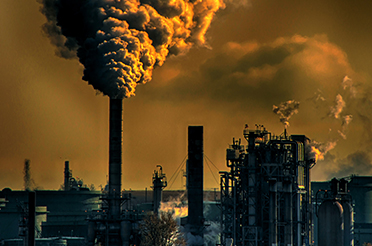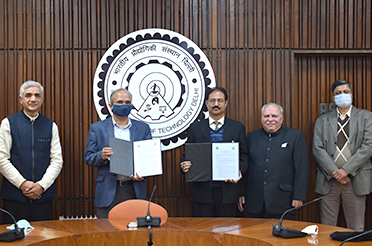Publish Date: 3rd February 2021
IITD study shows decline of air pollutant by more than 50 percent during lockdown
Share this on

A recent study from IIT Delhi has shown that Black Carbon, a key deleterious component of PM2.5 has seen reduced levels in the Delhi-NCR region following the nationwide COVID-19 lockdown and unlock phases.
Black Carbon (BC) is produced during incomplete combustion of fossil fuels and biomass and has major impacts on visibility, air quality, agricultural productivity, ecosystem, human health, and global warming. It is known to cause oxidative stress in the human respiratory system and impairs lung function in children.
The research study titled--Variations in Black Carbon Concentration and Sources During COVID-19 Lockdown in Delhi was published in the Journal Chemosphere. The online version of the paper was published on December 26, 2020. The research was done in collaboration with IIT Kanpur.
The study period (Feb-July 2020) included a pre-lockdown phase until March 24 and various successive lockdown and unlock phases. No significant change was observed in the BC concentration during the pre-lockdown period but during the lockdown, the BC concentration in March, April, and May 2020 was reduced by ~35%, ~77%, and ~52% compared to 2018. And during Unlock-1 (June 2020) and Unlock-2 (July 2020), the BC concentration was reduced by ~59% and ~27% compared to 2017.
The Researchers maintain that local emission sources were the dominant contributors to BC concentrations over Delhi across all the phases.
“The fact that concentrations of such a harmful constituent of PM2.5 underwent dramatic reductions during the lockdown has implications in developing the air pollution mitigation strategies. It is also important because BC mitigation can offset the CO2 induced warming in the near future,” says Mayank Kumar, the Principal Investigator of the project.
Vikram Singh, another principal investigator adds that the main objective of the present study was to investigate the effect of lockdown on temporal (daily and diurnal) variation of BC and its sources. “This study provides a detailed information of the BC sources which will help to formulate the BC abatement strategies.”
The research showed that fossil fuel burning is the dominant BC source during the entire study period. With successive lockdown relaxations an increasing trend in the fossil fuel contributions was observed, maintains Vikas Goel a post-doctoral Fellow and lead author of the study.








